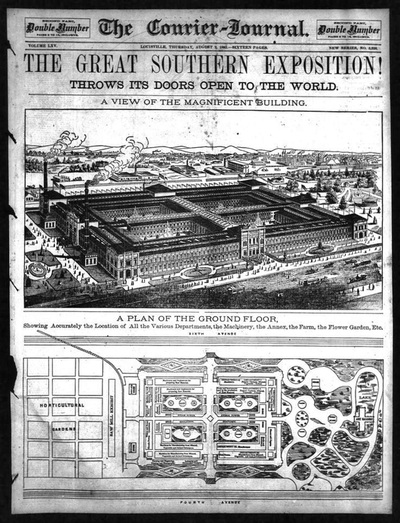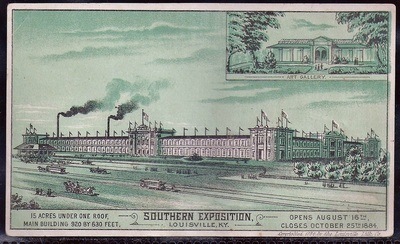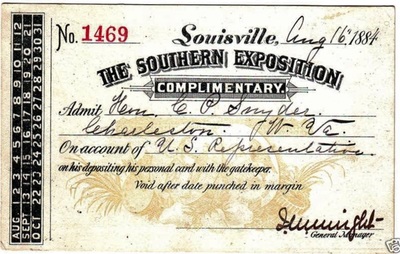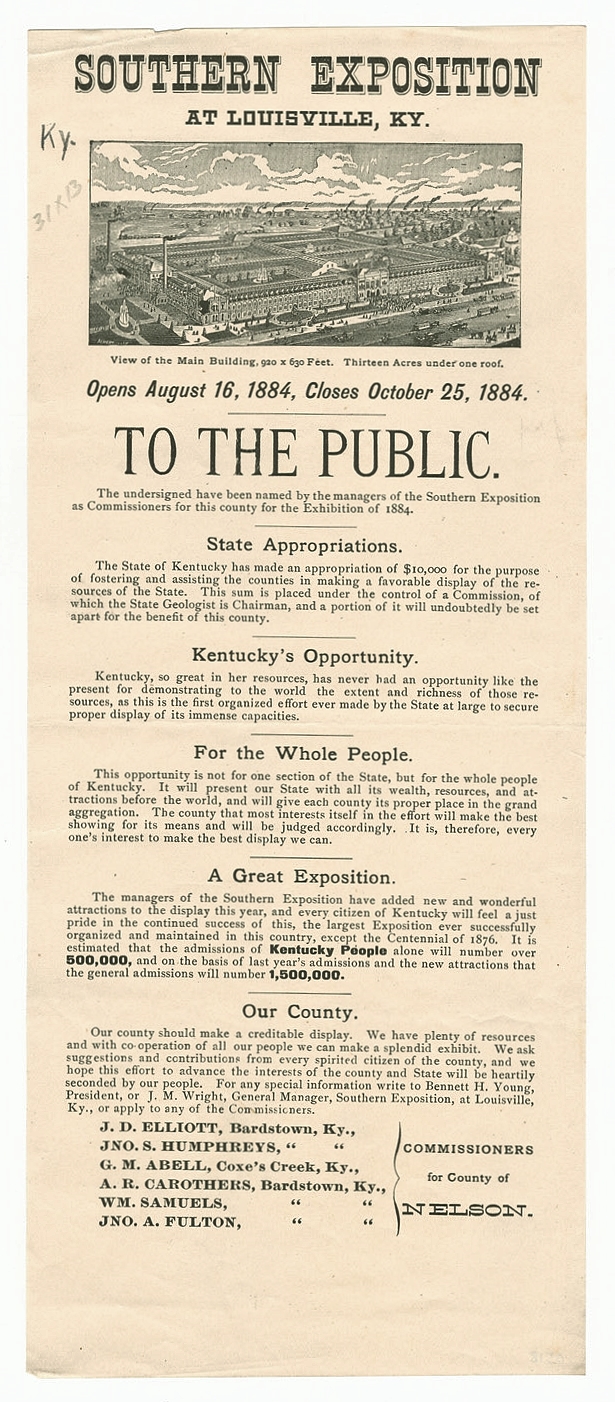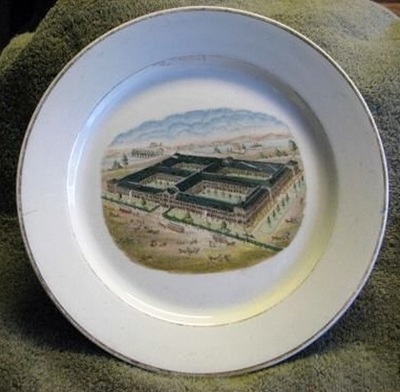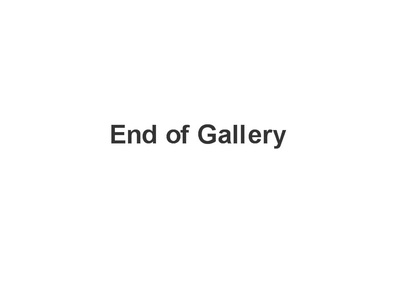The Southern Exposition 1883-1887
The Southern Exposition was a five-year series of World's fairs held in the city of Louisville from 1883 to 1887 in what is now the Old Louisville neighborhood. The exposition was held for 100 days each year on 45 acres immediately south of Central Park, which is now the St. James-Belgravia Historic District. At the time, the exposition was larger than any previous American exhibition with the exception of the Centennial Exposition held in Philadelphia in 1876. U.S. President Chester A. Arthur opened the first annual exposition on August 1, 1883.
The heavily forested hunting grounds just south of central Louisville were cleared and a huge pavilion and fairgrounds were built. The Exposition’s main building—perhaps the largest wooden building ever erected in the United States—covered thirteen acres. Much of the main building was devoted to machinery exhibits. The Exposition’s agricultural department presented a working farm and horticultural garden, featuring crops of tobacco, corn, hemp, flax, peanuts, and castor oil plants, as well as a vast field of cotton growing to the south of the main building.
The building was meant to be a temporary space for the 100-day event. But organizers were unprepared for the turnout. In the first 88 days, nearly a million people descended on Louisville. (Louisville itself had a population of just 156,000 at the time.) So the event was expanded to run between August and November for the next five years.
A large carriage house displayed vehicles of all kinds. A lumber mill annex demonstrated modern milling techniques. A large art gallery built in Central Park held masterpieces from many famous international collections. The park also hosted several refreshment stands, a shooting gallery and a music stand. Visitors were treated to concerts, lectures, theatrical performances and weekly fireworks displays.
One of the main attractions of Louisville’s Exposition was its ability to remain open at night. It was lit by 5,000 lamps, the largest display yet of Thomas Edison’s recently invented incandescent lights. There were more lamps at the exposition than all the lamps installed in New York City at that time.
To get an idea of the grandiose scale of the Southern Exposition, consider the following:
- President Chester A. Arthur officially opened the Southern Exposition in 1883.
- Thomas Edison personally supervised the installation of 5,000 incandescent lamps in the building, more light bulbs than the city of New York at the time.
- A half-scale Mayan temple was constructed inside the 180,000 square foot building.
- An electric trolley was constructed to encircle the Southern Exposition.
- A full-size southern plantation was built on what is today Louisville’s Central Park.
- The largest piano/organ in the world was built for the Southern Exposition.
---------
An Illustrated Catalog of the Art Gallery of the Southern Exposition is here.
The heavily forested hunting grounds just south of central Louisville were cleared and a huge pavilion and fairgrounds were built. The Exposition’s main building—perhaps the largest wooden building ever erected in the United States—covered thirteen acres. Much of the main building was devoted to machinery exhibits. The Exposition’s agricultural department presented a working farm and horticultural garden, featuring crops of tobacco, corn, hemp, flax, peanuts, and castor oil plants, as well as a vast field of cotton growing to the south of the main building.
The building was meant to be a temporary space for the 100-day event. But organizers were unprepared for the turnout. In the first 88 days, nearly a million people descended on Louisville. (Louisville itself had a population of just 156,000 at the time.) So the event was expanded to run between August and November for the next five years.
A large carriage house displayed vehicles of all kinds. A lumber mill annex demonstrated modern milling techniques. A large art gallery built in Central Park held masterpieces from many famous international collections. The park also hosted several refreshment stands, a shooting gallery and a music stand. Visitors were treated to concerts, lectures, theatrical performances and weekly fireworks displays.
One of the main attractions of Louisville’s Exposition was its ability to remain open at night. It was lit by 5,000 lamps, the largest display yet of Thomas Edison’s recently invented incandescent lights. There were more lamps at the exposition than all the lamps installed in New York City at that time.
To get an idea of the grandiose scale of the Southern Exposition, consider the following:
- President Chester A. Arthur officially opened the Southern Exposition in 1883.
- Thomas Edison personally supervised the installation of 5,000 incandescent lamps in the building, more light bulbs than the city of New York at the time.
- A half-scale Mayan temple was constructed inside the 180,000 square foot building.
- An electric trolley was constructed to encircle the Southern Exposition.
- A full-size southern plantation was built on what is today Louisville’s Central Park.
- The largest piano/organ in the world was built for the Southern Exposition.
---------
An Illustrated Catalog of the Art Gallery of the Southern Exposition is here.
2013 Aerial view of the location of the Southern Exposition, 1883-1887
Exterior Images and illustrations of the Southern Exposition
Hover over image to see caption. Click for larger image and a manual slide show with captions. Keyboard arrows can be used
Interior illustrations and Images
Memorabilia and Misc.

